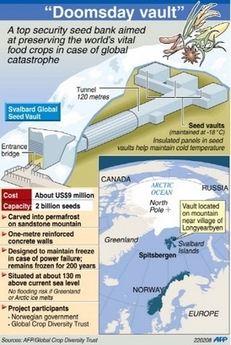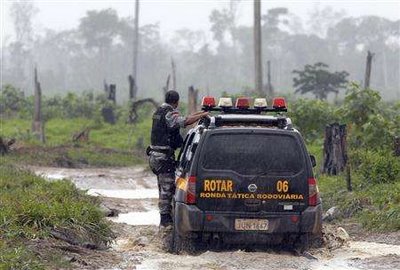Alaska town sues 24 energy companies over damages from global warming
By Timothy Gardner
Reuters
NEW YORK - An Alaskan village north of the Arctic Circle has filed suit in a U.S. District Court against 24 energy companies, in an attempt to link erosion damage from global warming to the defendants' actions.
Residents of Kivalina, a village of about 400 native Inupiat located on the tip of a barrier reef between the Chukchi Sea and two rivers, filed suit on Tuesday against the companies in U.S. District Court in San Francisco.
The suit is one of many global warming cases that have been filed after the U.N.'s climate change panel last year squarely placed the blame for global warming on human actions.
Village residents claimed that greenhouse gas emissions from the companies help warm the atmosphere and melt sea ice that used to protect them from winter storms. "Houses and buildings are in imminent danger of falling into the sea as the village is battered by storms and its ground crumbles from underneath it," the suit said.
The residents seek relocation costs which could run to $400 million.
Late last year, the U.S. National Oceanic and Atmospheric Administration offered a gloomy report on global warming's impact on the Arctic, finding less ice and hotter air.
The defendants, including Exxon Mobil Corp, BP Plc, Chevron Corp, coal miner Peabody Energy Corp, and power generator American Electric Power, are some of the largest producers of products that emit the main greenhouse gas carbon dioxide, or sell coal, the dirtiest fossil fuel.
Matt Pawa, a lawyer for the plaintiffs, said in an interview that under nuisance laws any major contributors to pollution problems can be sued.
He said since greenhouse gases combine together in the atmosphere to cause the overall problem of global warming, the biggest polluters can be blamed for contributing to the damage in Alaska. "Individual CO2 molecules don't have name tags," he said when asked if the companies could be directly linked to damage to the village.
The companies were chosen because they conduct some business in California, where the suit was filed. Pawa represented environmental groups in a successful automobile greenhouse emissions case in Vermont late last year that major automakers are appealing.
Gantt Walton, a spokesman for ExxonMobil, the world's largest publicly traded oil company, said the company had no comment on the case because it was still reviewing it.
He said ExxonMobil takes global warming "very seriously" and that the risks have warranted action by the company including reducing greenhouse gas emissions at its operations and supporting research into technology that could lead to breakthroughs.
Representatives of two other companies, Peabody and Chevron, did not immediately return telephone calls.
 RSS
RSS



